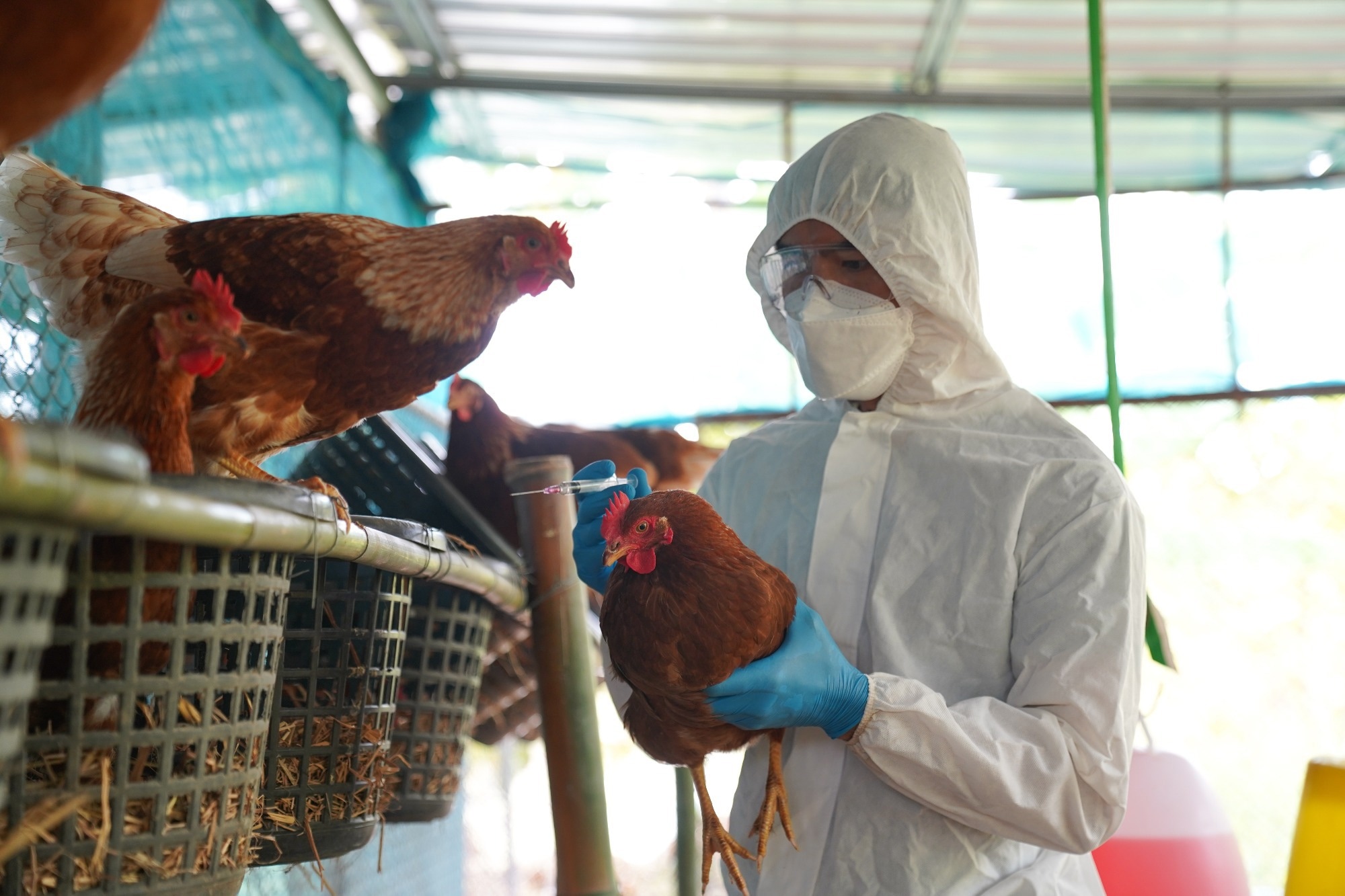In a recent study published in the journal Nature, researchers uncovered the ecological and virological dynamics behind the intensified global activity of highly pathogenic avian influenza (HPAI) H5N1 since 2021.
 Study: The episodic resurgence of highly pathogenic avian influenza H5 virus. Image Credit: Pordee_Aomboon/Shutterstock.com
Study: The episodic resurgence of highly pathogenic avian influenza H5 virus. Image Credit: Pordee_Aomboon/Shutterstock.com
The researchers revealed critical shifts in virus behavior and provided guidance for more effective future mitigation strategies.
Background
Influenza A viruses, part of the Alphainfluenzavirus genus and Orthomyxoviridae family, are classified by the antigenic properties of their surface proteins. While low-pathogenic strains commonly affect wild aquatic birds, high-pathogenic strains, notably H5 and H7 subtypes, emerge through mutations that enable severe infections in poultry.
Such viruses, especially the H5N1 subtype, have caused extensive outbreaks, often controlled through culling. These viruses evolve rapidly, exchanging genetic material with less severe strains, leading to widespread transmission across continents. Recent escalations in wild bird outbreaks, particularly by the H5N2, H5N6, and H5N8 (collectively H5Nx) viruses, prompt concerns over their evolving virulence and adaptability, highlighting the need for continuous surveillance and understanding of their evolutionary dynamics.
Further research is necessary to unravel the uncertain origins of the recent HPAI resurgences, understand the evolutionary pathways of HPAI H5Nx viruses in both wild and domestic birds, and interpret the broader ecological implications revealed through an extensive analysis of outbreak data and genomic sequences.
About the study
The researchers gathered HPAI H5 genomes featuring at least the Hemagglutinin (HA) gene, along with sample data like collection date, location, and host species, from the Global Initiative on Sharing Avian Influenza Data (GISAID) and National Center for Biotechnology Information (NCBI) databases as of July 2022.
They eliminated duplicates, lab-derived strains, and sequences with insufficient data or coverage, classifying the remaining genomes according to the identification World Health Organization (WHO) H5N1 nomenclature system using LABEL v.0.6.3.
Further analysis divided clade 2.3.4.4 into subclades based on their phylogenetic relationships to WHO H5 candidate vaccine viruses, using a maximum-likelihood phylogenetic tree created with FastTree v.2.1.1.
Hosts were identified as either domestic or wild birds via strain names, metadata, and original publications, with location coordinates ensuring at least province/state-level accuracy for certain countries.
Visualization and discrete analysis utilized location classification into countries and regions per NextStrain's list, with curated datasets subsampled to mitigate sampling bias.
For phylogenetic analyses, sequences were aligned with Multiple Alignment using Fast Fourier Transform (MAFFT) v.7.490, then trimmed with trimAL v.1.4, and molecular clock outliers were identified using TempEst v.1.5.3.
Reassortment analyses involved constructing ML trees for each gene using IQ-TREE v.2.1.4, with a subset of isolates selected for comprehensive study. The researchers visualized the incongruence between phylogenetic trees of eight genes using Baltic v.0.1.5 and inferred the timeline of reassortment for recent viruses.
They gathered data on all reported and confirmed human infections from WHO and bird outbreaks from global animal health databases.
Bayesian evolutionary inference was employed to estimate divergence times and evolutionary rates, using various models and methods in Bayesian Evolutionary Analysis Sampling Trees (BEAST) v.1.10.4, ensuring an effective sample size of more than 200 post-burn-in.
They also conducted discrete phylogeographic analyses to reconstruct spatial diffusion among geographic regions and hosts, with significant transitions between states determined by Markov chains models.
To provide a more nuanced geographic history, the study estimated HPAI H5 diffusion in continuous space using a Cauchy relaxed random walk model and integrated spatial diffusion and host transmission processes to quantify host-specific diffusion rates and geographic expansion for each lineage. Visualization was carried out using various specialized software and libraries.
Study results
Since 2005, the Food and Agriculture Organization (FAO) and the World Organisation for Animal Health (WOAH) have reported concerning trends in the recurrence of (HPAI) H5 viruses among wild and domestic birds. Initially prevalent in Asia and Africa, these viruses have extended to Europe and North America, with four significant wild-bird epizootics since 2005, continuing into 2023.
Predominantly caused by clades 2.3.4.4 and 2.3.4.4b, these epizootics have impacted bird populations differently, with strains like H5N8 and H5N6 causing major outbreaks. The novel reassortant H5N1 virus is particularly alarming, overshadowing other HPAI H5 strains globally.
The outbreaks have led to substantial repercussions, including the culling of millions of birds, with surges correlating with increases in wild-bird cases, hinting at complex interplays in virus proliferation.
Genomic analyses reveal intricate origins and evolutions of these viruses. For instance, the 2014–2015 and 2016–2017 epidemics were traced back to separate viral lineages in China. The 2020–2021 outbreaks evolved from clade 2.3.4.4b H5N8 viruses, initially identified in Egyptian poultry, indicating regional evolution despite limited surveillance.
Genetic reassortment among European strains led to the virulent forms responsible for the 2021–2022 outbreaks.
The viruses' global trajectory, especially the clade 2.3.4.4b H5N8 strain, has been systematic and persistent. Migration patterns from Egypt towards Russia and Eastern Europe in 2019, followed by spread across Eurasia and eastward to China, have led to new reassortments, including lineages causing human H5N6 infections.
Advanced studies combining Bayesian principles and asymmetric data analysis have traced virus dispersion patterns and spillover dynamics, showing a significant shift from Asia to Europe and Africa.
The persistence of the 2.3.4.4b clades in these new central loci has been longer, with notable phylogenetic shifts primarily among wild birds. Analysis has also uncovered significant intercontinental transmission activity, particularly between Asia and Europe.
These findings emphasize wild birds' critical role in the long-distance propagation of HPAI H5 viruses, underlining the need for vigilant surveillance, robust reporting, and proactive measures in a profoundly interconnected world.
Understanding these dynamics is crucial for managing and mitigating future outbreaks, as regional issues can swiftly escalate into global crises.